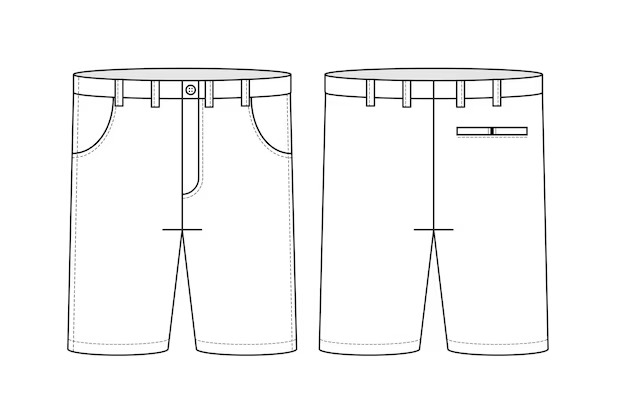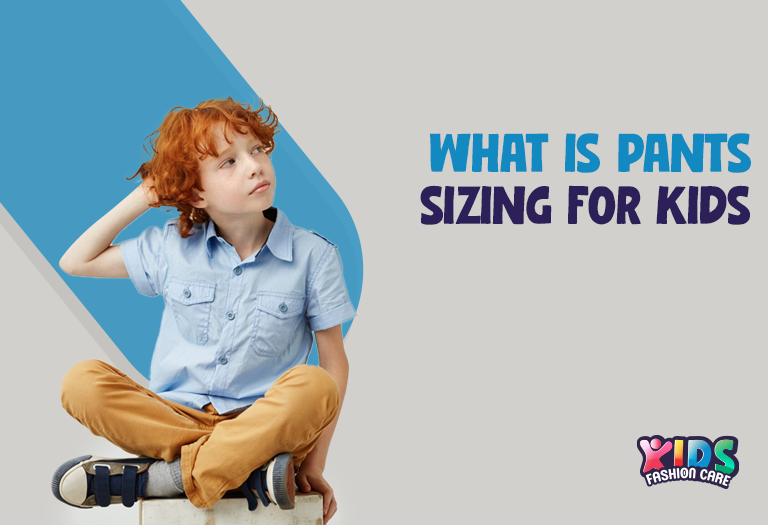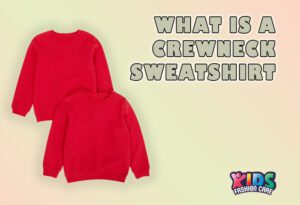Pants sizes for kids vary depending on children’s age, boys pants, girls pants, their body growth, clothing manufacturers, and country. To find kids pants size chart accurately, measure your kids from time to time, what you need to measure is their waistline, hips, and inseam.
Introductions
Pants or shorts are one the essential items for children. One or two pieces of tops might be enough for a child for one day, but having a pair of pants for a day is never enough. You have to have a backup of several pairs of pants in your baby’s closet.
If you are wondering What is Pants Sizing for Kids to find the right sized one, welcome to my new blog. Here you will find in detailed guide on measurements, pants size chart, and tips to find the right size of pants for your children. Without further ado, let’s get started.
Table of Contents
Measurement Basics

If you are looking for a child’s measurement chart, check here below. Here I have listed down children’s body measurements based on their age. Please note that this measurement chart is in general and the variables mentioned are approximate. Based on the child’s growth this will vary.
Category: Infants
Age range: 0 months to 12 months
| Size | Height | Weight | Waist |
| 0 months to 12 months | 20 inches to 30 inches | 6 pounds to 26 pounds | 15 inches to 19 inches |
| 12 months to 24 months | 30 inches to 34 inches | 26 pounds to 30 pounds | 19 inches to 21 inches |
Category: Toddlers
Age range: 2 years to 5 years
When infants grow a bit, they start to gain some physical attributes. If your baby falls in the category, based on toddler years, you need to take measurements of their hips and, inseam separately.
| Size | Height | Weight | Waist | Hips | Inseam |
| 2T | Around 34 inches | 30 to 32 pounds | 21 inches | 21 inches | 14 inches |
| 3T | 35 to 37 inches | 33 to 35 pounds | 21 to 22 inches | 21 to 22 inches | 14 to 15 inches |
| 4T | 38 to 40 inches | 36 to 37 pounds | Around 22 inches | 22 to 23 inches | 16 to 16 inches |
| 5T | 41 to 43 inches | 38 to 40 pounds | Around 22 inches | 23 to 24 inches | 16 to 18 inches |
Category: Children
Age range: 6 to 9 years old
Children of this age range are literally the ‘tiny-you’ version. They are about to be a ‘grown-up’ body and require their gender-specific clothing, for example, boys pants are different than girls pants. That’s why their figure sizing matters most while shopping. Let’s check the lower half measurements of a child’s body.
Age | Size | Height | Weight | Hips | Waist | Inseam | ||
| Boys | Girls | Boys | Girls | |||||
| 5 to 6 years | 6 / S | 44 to 46 inches | 45 to 50 | 45 to 50 | 24 to 25 inches | 24 to 25 inches | Around 22 inches | 18 to 20 inches |
| 6 to 7 years | 7 / M | 47 to 49 inches | 50 to 58 | 50 to 57 | 25 to 26 | 25 to 27 | Around 23 inches | 20 to 23 inches |
| 7 to 8 years | 8 / M | 49 to 52 inches | 58 to 68 | 57 to 65 | 26 to 27 | 27 to 28 | Around 24 inches | 23 to 24 inches |
| 8 to 9 years | 10 / L | 52 to 55 inches | 68 to 87 | 65 to 75 | 27 to 29 | 28 to 30 | Around 25 inches | 24 to 25 inches |
Category: Preteen
Age range: 10 to 12
These children are preadolescent. At this stage, children’s bodies develop based on their gender. So, your concern stays on their clothing sizes appropriate for age. Apart from these physical changes, they will have psychological changes and will opine their choice on almost everything, even on wearing fashionable clothing. So, while choosing pants for them, consider their body measurements and their opinion, choices, and preferences. Let’s check the body measurement of this category.
Age | Size | Height | Weight | Hips | Waist | Inseam | |||
| Boys | Girls | Boys | Girls | Boys | Girls | ||||
| 9 to 10 years | B: 12/XL, G: 12/L | 55.5 to 58.5 inches | 55 to 58 inches | 87 to 100 pounds | 75 to 86 pounds | 29 to 30.5 inches | 30 to 32 inches | 25 to 26 inches | 26 to 27.5 inches |
| 10 to 11 years | 14/XL | 58.5 to 61.5 inches | 58 to 61 inches | 100 to 110 pounds | 86 to 100 pounds | 30.5 to 32 inches | 32 to 34 inches | 26 to 28 inches | 27.5 to 29 inches |
| 11 to 12 years | 16/ XXL | 61.5 to 64 inches | 61 to 62.5 inches | 110 to 120 pounds | 100 to 108 pounds | 32 to 33.5 inches | 34 to 36 inches | 28 to 30 inches | 29 to 29.5 inches |
Kids Pants Sizing Systems
Kids’ pants sizing systems are mostly done by age. If you go to buy clothing for them, you will first be asked what is the age of your child. If your child has a faster or slower growth rate than their peers, then you might have to tell the height, which is where the kid’s height measurements come into play.
Here are the most common sizing systems for kids’ pants are described.
Kids pant sizing based on age
For infants and toddlers, the sizing is 2T, 3T, etc. As the baby grows up, the ‘T’ disappears and their clothing size is shown in number, such as size number 5, 6, etc.
Child’s pant sizing based on measurement
As mentioned earlier, if your child has a fast or slower growth rate, then, you may take considerations of their height. Measuring the child will help you find the most accurately fitting clothing for them. Also, many brands offer custom clothing sizes for children as well. You may take advantage of that if you have a record of the child’s measurement.
Babies’ pant sizing as per the alphabet
Similar to adult people’s clothing, children have sizing guides which are:
XS: Extra Small
S: Small
M: Medium
L: Large
XL: Extra Large
Here is the numeric size conversion from the letter from the kids’ pant size.
| Alphabetical size | Numeric size |
| S (Toddler) | 2T |
| M (Toddler) | 3T |
| L (Toddler) | 4T |
| Small, signed as ‘S’ | 4 |
| Medium, signed as ‘M’ | 5 |
| Large, signed as ‘L’ | 6 |
| Extra Large, signed as XL | 7 |
Measuring Your Child for the Perfect Fit
To find the perfect size of clothing, you need to measure your child appropriately. Here is how you can measure your child.
Step 1: To find the right fit clothing for your baby let your him/her wear tight fitting clothing.
Step 2: Gather the equipment with which you will do the measurements. Those are:
- Cloth measuring tape
- Pen or pencil
- A piece of paper
Step 3: Measure your child’s height first. Let him/her stand against the wall, and measure from head to heel.
If you are buying tops or t-shirts here is what you need to measure with a measuring tape:
- Shoulder: From left to right side.
- Neck: Around the neck part.
- Chest: Around the chest part, under the arms.
- Arms: From shoulder to wrist.
For buying child’s pants, here is what you need to measure:
- Waist: Natural narrow part of the whole waistline.
- Hips: The fullest part of the hips.
- Inseam: From the starting of the leg, near the crotch area, to the heel. Take the full length of kids legs.
Write all these measurements for future records.
Step 4: While buying pants for your baby, take this pants measurements size chart of your kids.
Shopping Tips to Find the Right Pants for Children
If you are going to buy the right pair of pants for your kids, here are some tips to follow. Let’s check them out.
Infants pants
- Look for pants that are simple designing (not many decorations, zippers, buttons, etc), so that whenever children wear them, it doesn’t create a disturbance on them.
- Make sure the pants are made of good quality fabrics, soft to the touch, and stretchy so that the pant offers comfort at its peak.
- Buy one or two sizes larger, as children grow fast. If you buy a fitting one, it might not be usable for one month later.
- Stick to well-known brands for infants clothes. Brands are generally safe and offer quality products, so you can use them for your kids care.
Toddlers pants
- Pants have to be comfortably elastic so that it is easy to wear.
- Consider that the baby needs to wear a diaper inside the pants, so the pant size has to be flexible yet right.
- If they can express an opinion, ask them if the pant feels good for them.
Children’s pants
- Bring your children to the shop while shopping pants for them.
- Take a pair of pants that your child feels comfortable wearing.
- Buy one size large pants.
Styling Tips for Kids Pants
Finding children’s clothing sizes fit right is a great relief, because not only does this look good, but also makes children comfortable in wearing the clothing. If you have found the right pants size chart, its time to know some tips to consider while styling up your toddler pants. Check these out.
1. Fold the pants near the ankle area. If the pants are big in size, it will be adjusted. If it is the right size, this will look fashionable.
2. Tuck the t-shirt or tops inside the pants.
3. Buy different colors of pants, better if most are dark colors.
4. Have different occasion-based pants for little ones.
Frequently Asked Questions (FAQs)
Question: What size is a 12-13-year-old boy?
Answer: The basic clothing size for boys between 12 to 13 is XL (14-16) or 14.
Question: What size is youth medium?
Answer: Youth medium size indicates kids aged between 8 and 10. Depending on growth their height and weight, their clothing sizes vary as well. If your child falls in the youth medium category, make sure to have his/her measurement right.
Question: What does the “T” stand for in the size chart?
Answer: In the children’s clothing, or shoe size chart you will find the letter ‘T’ which indicates ‘Toddler’. Let’s say a pant size is written 2T, that means, it will fit on a two-year-old child’s waist.
Question: How do you measure a child’s waist for pants?
Answer: To take your child’s waist measurement for purchasing pants, measure the full legs, starting from below waist. That is, their waist, hip, and inseam measurements with a cloth measuring tape. Do not measure it too tight or too loose.
Question: What is an 11 year old boy pants size?
Answer: Typically, an 11-year-old boy’s pants are between 10 and 12 (size L). It’s always a good idea to check the sizing chart or try on the pants to ensure the best fit. An 11 year old boy pants size can vary depending on his height and weight.
Conclusion
I hope now you understand the kid’s clothing size chart, the process of how you can measure your child, and find the right fit of clothes for your little ones.
Just a friendly reminder, as children generally have a fast growth rate, so, I recommend shopping for one size large clothes so that you can get them to wear for a few more times than usual.
If you want me to write on any specific topic or are curious about your childcare, drop me a message. I will cover try to cover that. See you in my next article.






